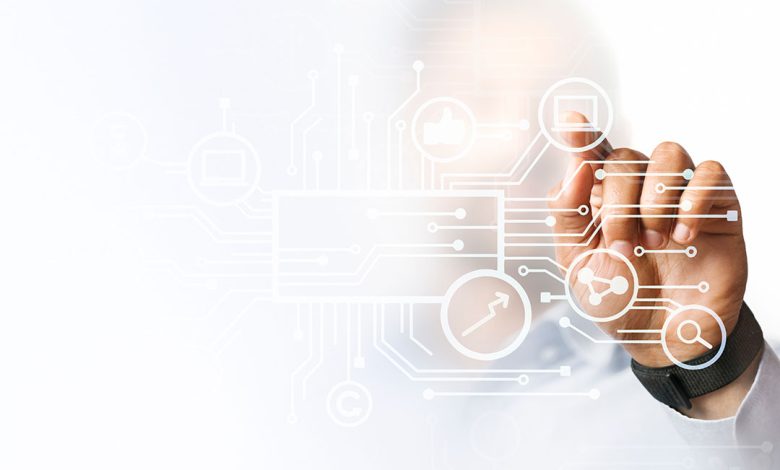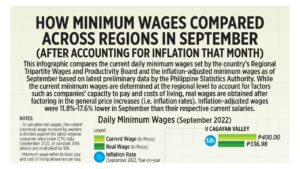Four tech trends to propel the Philippines into its next wave of growth

Over the next 10 years we will experience unprecedented technological progress. A potent mix of massively enhanced computing power, automation, and smart technologies is set to reinvent a wide range of industries as part of the so-called Fourth Industrial Revolution or Industry 4.0. While this has the potential to cause significant disruption by reshaping whole companies and markets, it also promises significant GDP growth.
In the Philippines, the government’s National ICT Ecosystem Framework lays out the country’s roadmap to developing its digital economy, which is anchored on five interdependent pillars: talent and skills, accessibility, platforms, infrastructure, and standards and regulations. Realizing this roadmap would be a significant boost to the economy — a recent study commissioned by Google finds that digital transformation can unlock $101.3 billion in the Philippines by 2030.
Our perspective is that four rapidly emerging technology growth engines are likely to be especially significant along the path to achieving these goals: the future of connectivity (5G and the Internet of Things or IoT), applied artificial intelligence (AI), distributed infrastructure (cloud computing), and automation.
FUTURE OF CONNECTIVITY
The pandemic has accelerated digital uptake across the globe, with the Philippines showcasing a similar trend: the number of Filipino internet users tripled to 73 million in 2020 from 23 million in 2010, according to the World Bank’s Philippines Digital Economy Report 2020. However, while COVID-19 has hastened digital adoption, the country still lags behind its regional peers: internet services are comparatively more expensive with slower broadband speeds and unequal access due to a lack of competition and limited infrastructure. Importantly, the accessibility, affordability, and quality of broadband is likely to determine the speed of uptake and development of the other technologies given that it serves as the key driver of the other technological trends.
In light of these limitations, the government is looking to boost connectivity with a National Broadband Plan that seeks to foster faster deployment of digital infrastructure, especially in remote areas, and a free wi-fi program to provide free internet access in public areas.
Today, the industry is looking to incorporate sensors and other devices across networks as part of the Internet of Things (IoT). It is accelerating the 5G rollout, enabling networks to bring new applications to customers. Globe Telecom has set up 5G coverage across 1,906 sites nationally, allocating P76 billion ($1.5 billion) in capital expenditure for fiber and 5G network expansion. Infrastructure advances have enabled Union Bank to become Globe’s first 5G-powered bank, while Apper.ph’s partnership with Globe is set to test console-less gaming using cloud technology and 5G. Similarly, PLDT’s Smart brand rolled out its Smart 5G nationwide in July 2020, launching the first 5G-powered e-sports hub, as well as a 5G-powered sports broadcast for the Philippines Basketball Association.
APPLIED AI
Artificial intelligence (AI) is regarded by many governments as a nation-defining capability. Our research suggests that, by 2024, more than 50% of user interactions will be augmented by AI-driven speech, written word, or computer-vision algorithms. Rapid adoption of AI and its applications has gone hand-in-hand with the accelerated digital uptake spurred by the pandemic as organizations have sought to identify levers to spark their next wave of growth.
The value of AI has not gone unseen. In the Philippines, the Department of Trade has created a roadmap to realize the potential of AI and establish the country as an AI hub in the region. As part of this, the government has established the private sector-led National Center for AI research (NCAIR) to spearhead the country’s research and development efforts on AI and in nurturing and developing AI talent in the country.
On the industry side, we are already seeing moves from sectors that will be significantly affected by the adoption of AI such as high tech and telecom, financial services, manufacturing, transportation and logistics, healthcare, and education.
Examples include Medgate Philippines’ incorporation of AI into its telemedicine platform to create AIDA, a chat-bot system that helps patients to self-triage and assess risk factors to determine whether they should seek a teleconsultation, visit a clinic, or go to an emergency room. In banking, Union Bank plans to use AI to tailor product and service recommendations to customers by analyzing their profile and previous transactions.
Disruptions resulting from the effective implementation of AI will see labor displacements from repetitive tasks, faster development cycles for new applications, and more detailed customer insights for companies; at the same time, there will be an increasing need for highly specialized services and talent.
To help firms adjust, develop new technologies, and use computational tools (especially AI), the NCAIR has been created to support micro, small, and medium enterprises (MSMEs).
DISTRIBUTED INFRASTRUCTURE (CLOUD AND EDGE COMPUTING)
A distributed IT infrastructure helps companies stretch their computing power to the edge of their networks, expanding reach to data-hungry devices across a large number of dispersed locations with less latency, while supporting faster decision making with on-demand advanced analytics.
Although far from mature here in the Philippines compared to other countries, the switch to cloud and edge computing looks set to accelerate, given recent government initiatives, a young talent pool, and infrastructure developments. Enterprise-cloud spending is anticipated to reach $2.6 billion by 2024, up from $1.8 in 2020, according to a study from GlobalData.
More recently, major industry players such as Alibaba Cloud have expanded their footprint in the Philippines: for instance, with the establishment in 2020 of the Philippines Ecosystem Alliance to promote cloud adoption and analytics amongst local businesses. Alibaba Cloud is also set to open a data center here by the end of 2021, with plans to develop Filipino talent by training 50,000 local IT professionals and bring 5,000 businesses online by 2023.
PROCESS AUTOMATION AND VIRTUALIZATION
Process automation and virtualization, which combines the Industrial Internet of Things (IIoT), robotics, digital twins, and additive manufacturing, is set to revolutionize employment. The Asian Development Bank anticipates that a quarter of jobs in outsourcing and electronics will be shed due to automation; however, this will be offset by new roles within those industries.
Responding to the anticipated disruption from automation, the Philippines Skills Framework Initiative prioritizes skills development in the most vulnerable sectors: construction, creatives, food, health and wellness, IT-BPM, logistics and supply chain, manufacturing, and tourism.
We can expect these four tech trends to bring far-reaching changes for Philippine companies, industries, and markets — and across the wider society. These fast-moving technology trends can bring growth and competitive advantage for organizations prepared to embrace these changes. Consumers also stand to benefit, with novel and more affordable services and applications — in healthcare, entertainment, and financial services for instance — and in the creation of new areas of employment. At the same time, it will remain vital for all stakeholders to assess and mitigate business, operational, compliance, legal, and societal risks in the context of these profound technology shifts.
Jon Canto is interim managing partner for the Philippines at McKinsey & Company.




